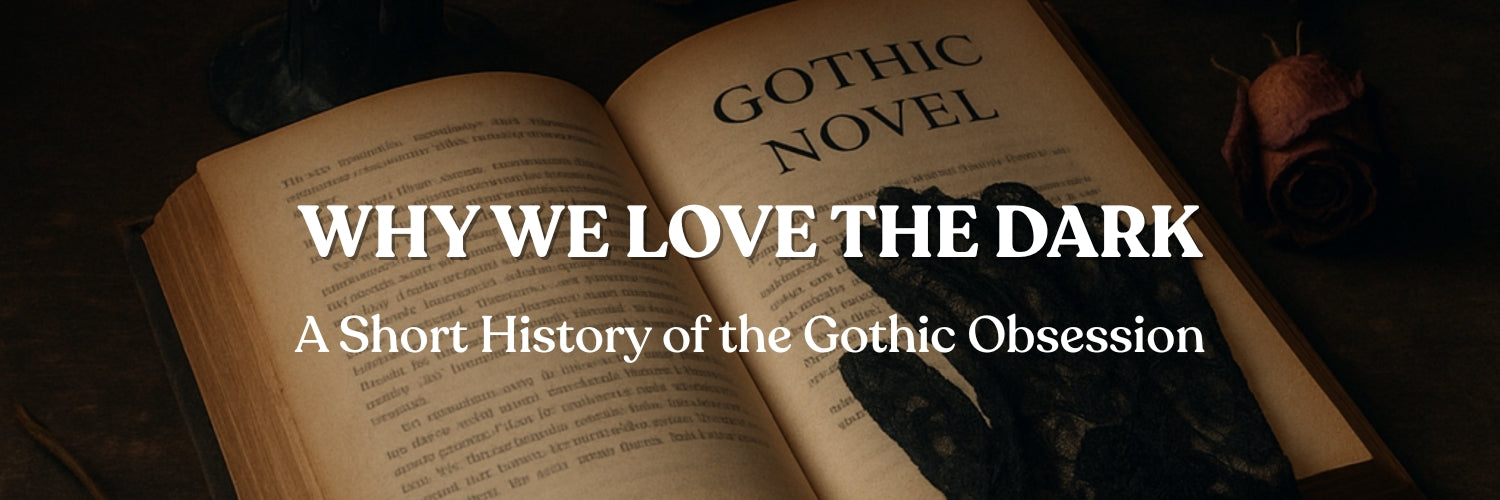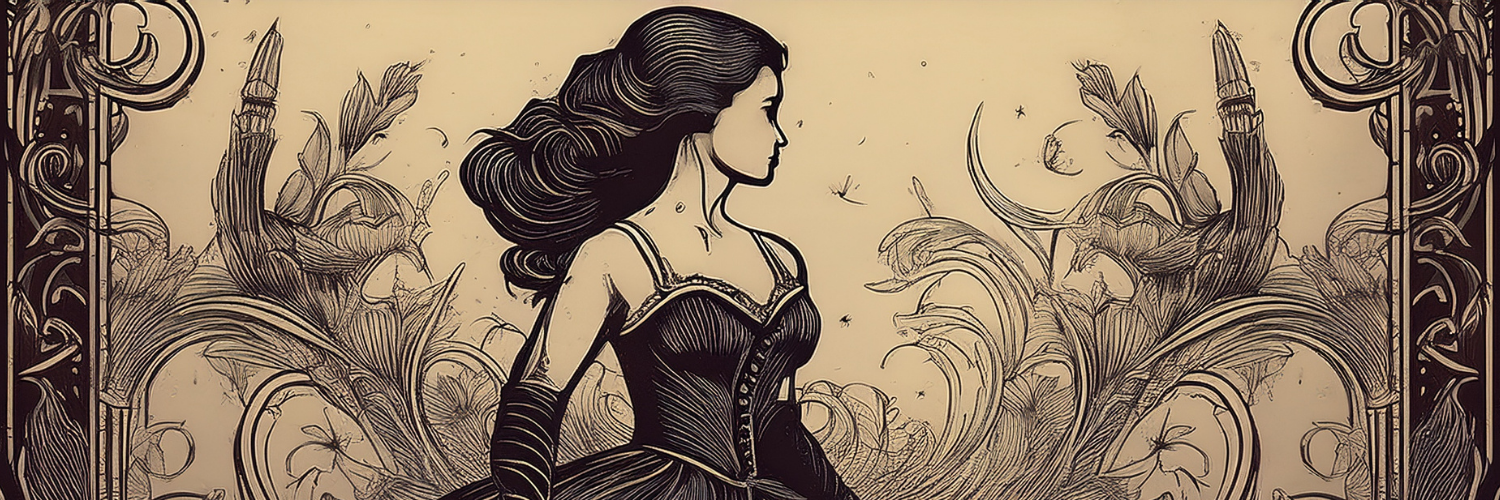Why We Love the Dark: A Short History of the Gothic Obsession

“There is no beauty without some strangeness in the proportion.” – Edgar Allan Poe
Introduction: The Beauty in Shadows
The gothic isn't a trend—it’s a pulse that never truly stops beating. From candlelit cathedrals to Tumblr dashboards, from Mary Shelley to Morticia Addams, our fascination with the dark is constant. We’re drawn to it not because it’s frightening, but because it’s oddly comforting. Gothic themes—decay, beauty, sorrow, the supernatural—don’t repel us. They reflect us.
But where does this obsession come from? Why do so many of us feel more at home in moonlight than in daylight? This post explores the roots of gothic allure, from literature and architecture to fashion and the quiet rebellion of melancholy aesthetics.
1. A Brief History of the Gothic: From Cathedrals to Coffins
The word gothic originally referred to a style of architecture in 12th-century Europe—think towering cathedrals, arched windows, and stained glass that filtered light like a dream. It was meant to inspire awe and reverence. Ironically, centuries later, that same style would inspire dread and fascination in gothic fiction.
When Horace Walpole published The Castle of Otranto in 1764, he accidentally invented an entire genre. Dark castles, family curses, ghosts, madness—all became hallmarks of a new kind of story. Authors like Mary Shelley, Ann Radcliffe, and later Edgar Allan Poe would perfect the art of weaving horror with beauty.
Gothic literature was a rebellion against the rational world. It said: maybe not everything makes sense. Maybe ghosts are real. Maybe the past never really dies.
2. Beauty, Decay, and the Aesthetic of Melancholy
Gothic isn’t just about horror—it’s about what remains beautiful even in decay.
A crumbling building, a yellowed page, a wilted rose… there's a story in what’s falling apart. In gothic fashion and decor, we recreate this beauty: torn lace, black velvet, antique frames, flickering candles. It’s a way of holding space for impermanence, of saying: this too is part of life.
Melancholy isn’t depression. It’s a reflective sadness, a soft grief that can be oddly healing. And gothic art gives it form. We wear our sadness in our clothes. We frame it in our rooms.
3. Fashioning the Dark
From Victorian mourning gowns to modern dark academia, gothic fashion has always been more than aesthetic—it’s armor.
In 19th-century England, widows were expected to wear black for up to two years. This mourning dress became ritualized. Today, black clothing is still a symbol—of rebellion, elegance, mystery. Gothic style allows people to express emotion without saying a word.
At The Raven’s Crypt, this tradition lives on. Our women’s clothing and men’s pieces draw inspiration from classic gothic silhouettes, dark poetry, and symbolic imagery. It’s not cosplay—it’s a language.
4. Poe, Lovecraft, and the Birth of the Macabre Sound
Words are at the heart of the gothic—and no one knew that better than Edgar Allan Poe. His tales—of madness, lost love, and mysterious deaths—have shaped gothic literature for generations. Even today, hearing his works aloud gives chills.
That’s why we created Fog of Madness and Echoes from the Crypt: to bring back the art of spoken horror. Vinyl and cassette aren’t just nostalgic—they’re intimate. When you hear a voice recite The Tell-Tale Heart in the dark, you’re no longer alone in the room.
This love of word and sound isn’t new. Gothic readers have always been listeners. Gathered by candlelight. Reading aloud. Feeling the weight of each pause. This is why we collect, curate, and preserve these voices.
5. Modern Gothic: From Tumblr to TikTok
Why does gothic still thrive today? Because it evolves.
The Tumblr boom of the 2010s brought back gothic visuals with a vengeance—black-and-white edits, poetry quotes, foggy forests. TikTok now carries the torch with trends like dark academia, goblincore, and romanticizing loneliness. These aren’t just fashion statements. They’re expressions of identity in a noisy world.
In a time of overstimulation, gothic offers a slow space. It says: let’s sit with the shadows. Let’s light a candle. Let’s feel something deeply.
6. The Gothic Lifestyle: Living with Intention
To love the gothic is to love the in-between. Daylight and dusk. Beauty and sadness. Life and death.
Our homes reflect this. We light candles even when we’re alone. We decorate not to impress, but to create atmosphere. We drink tea by the window on stormy days. We wear velvet in summer. It doesn’t need to make sense. It just needs to feel right.
Our canvases, throw pillows, and poster art help you bring this mood into your space. They’re more than decor. They’re signals—to yourself, to others—that you see the beauty in the dark.
Conclusion: Why the Dark Still Matters
In a bright, loud world that demands happiness, the gothic gives us permission to feel something else. Something deeper.
We love the dark not because we’re broken—but because we understand that light and shadow are part of the same story. And sometimes, it’s in the quiet corners, in the low flicker of a candle, where we finally feel most alive.
So light the candle. Press play on that record. Hang the crow on your wall.
You’re not alone in your love of the strange. You’re in good company.









